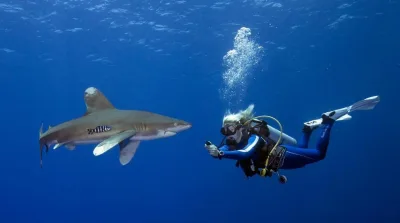According to an article by Science Daily, a team of scientists from eDNAtec Inc. - working in collaboration with Memorial University and Fisheries and Oceans Canada - announced some ground-breaking environmental findings earlier this month. Their recent research demonstrates a new method of using DNA found in seawater samples to determine which fish species are present in specific areas of the deep sea.
The technique will improve our ability to monitor deep-sea fish diversity. Tracking specific species can also help researchers better understand the impacts of commercial fishing and climate change on the ocean's lesser-explored depths. Until now, the existing methods used included baited camera traps, trawling, and acoustic monitoring. But, these approaches offer limited detection capabilities and are difficult to use in much of the underwater world.
This new method, called eDNA metabarcoding, allows scientists to analyze environmental DNA - also known as eDNA - to determine which fish species are present in the habitat. This is thanks to the minute amounts of DNA shed by organisms in the surrounding environment - a normal part of life underwater.
To determine the effectiveness of this state-of-the-art process, researchers applied it to seawater samples collected from the Labrador Sea at depths up to 2,500 metres. In the team's deep-sea water samples, eDNA metabarcoding successfully identified 11 fish families, 11 genera, and eight species. These results were then compared to those obtained via conventional methods. Not only did eDNA metabarcoding offer broader coverage of fish diversity, but it also used significantly less logistical effort. These big advantages make eDNA techniques a vital step forward for large-scale species monitoring.
The research team also tested the effectiveness of eDNA metabarcoding using different amounts of deep-ocean seawater and different DNA primers - short strands of DNA which are applied during the laboratory analysis of eDNA to determine which animals are present. Their findings suggest that the deep ocean environment requires slightly different methods than those used in shallower waters. These adjustments include collecting larger volumes of water and applying multiple DNA primers to maximize species detection.
While the team plans to further refine their eDNA metabarcoding procedures for the unique deep-sea environment, they believe this method can already provide valuable insights when monitoring fish diversity in the deep ocean. Such insights could prove crucial with the ocean’s biodiversity undergoing a dramatic transformation in the wake of rapid environmental change.




